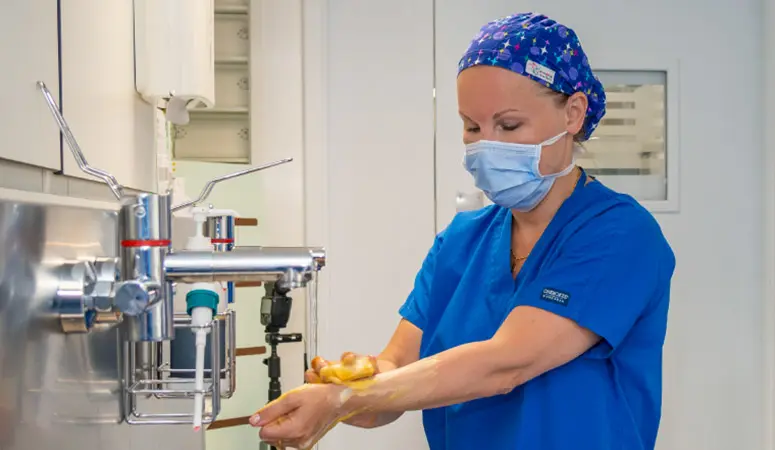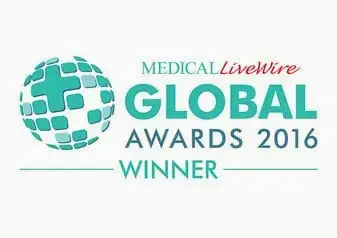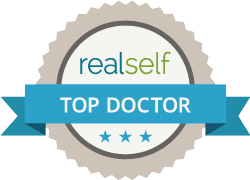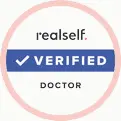
Tummy Tuck Recovery Timeline: What to Expect Week by Week
Published by
Elena Prousskaia
Deciding to have a tummy tuck is a life-changing choice that goes beyond improving appearance. A tummy tuck is a type of cosmetic surgery and is considered a major surgery due to its complexity and the significant impact it can have on your body and lifestyle.
For many people it restores comfort, confidence, and freedom of movement. Understanding the tummy tuck recovery process is just as important as knowing what the surgery involves. A clear picture of what to expect during recovery helps you prepare mentally and physically, ensuring you achieve the best possible results.
With an experienced surgeon like Elena Prousskaia and the reassurance of a private hospital such as North Bristol Private Hospital, patients can feel supported every step of the way.
What is a tummy tuck and who is it for?
A tummy tuck, also called abdominoplasty, is a surgical procedure to reshape the abdominal area and stomach so that the profile is flatter and smoother, eliminating bulges.
Excess skin, extra skin, and excess fat are removed, and the deep tissue or fascia over the abdominal muscles is tightened, often involving abdominal wall repair or reconstruction. In many cases, between 30-50 percent of abdominal skin is removed. Stretch marks on that removed skin are often eliminated. The belly button is also reshaped. The scar is hidden by underwear. Several techniques are possible, and which is right for a given patient depends on how much tissue needs removing, whether muscle repair of the abdominal wall is required, and which areas—such as the lower abdomen—are targeted. A full abdominoplasty may be recommended for patients needing comprehensive abdominal transformation, including muscle repair and removal of excess tissue.
This surgery is not simply cosmetic but life enhancing for many individuals. It can significantly improve confidence, comfort, and quality of life. Elena emphasises understanding patient concerns, listening to what the patient hopes to achieve, and ensuring the result aligns with realistic expectations. Common issues addressed by abdominoplasty include loose skin and extra skin, especially after significant weight loss or pregnancy.

Discover more amazing tummy tuck before and after results today
Timeline of tummy tuck recovery
Below is what to expect in terms of recovery after a tummy tuck performed by Elena in Bristol, based on her own published information. Every patient is different but these are typical stages and milestones. Recovery times can vary, and your surgeon will provide a specific timeline tailored to your recovery journey.
Immediately after surgery to week 1
Surgery takes three to five hours under general anaesthetic. After the operation you will wake up in a recovery suite, a dedicated space within the hospital where you are closely monitored as you recover from anesthesia.
You will stay in hospital for one night. Staff will help you move, manage pain, dress wounds, and deal with any drains or dressings. A surgical dressing is applied immediately after surgery to protect the incision site and manage fluids.
A compression garment is typically worn to reduce swelling, support healing, and improve recovery outcomes. Medication, including pain medications, will be given, and it is important to take pain medication as prescribed. You will be typically able to stop most medications in about a week.
Weeks 2 to 4
The first few weeks are a critical period for rest and gradual activity. During these early weeks swelling, bruising, discomfort and tightness are common.
You will likely still need support in movement, walking gradually more, avoiding strenuous movement or lifting. Standing fully upright may still be difficult. Paying attention to wound care and following all instructions from the surgeon are critical for the healing process.
Most patients can expect to resume light activities after about two weeks, but should avoid strenuous exercise for six to twelve weeks. After about four weeks there is a follow up appointment where progress is reviewed as part of your follow up care and recovery journey.
Weeks 4 to 6
By this period, which marks the first six weeks of recovery, many patients can begin to drive if they feel comfortable and safe. Standing upright becomes easier. Some light activities may be possible but heavy lifting should still be avoided.
You may feel more mobile and daily tasks less painful. Work may become possible for less physically demanding jobs after around four to six weeks, depending on the person and type of work. Elena recommends taking four to six weeks off work. Approximately six weeks is a common milestone for stopping the use of compression garments; your surgeon will advise when you can stop wearing them. Wearing a compression garment during this period reduces swelling and supports the healing process, contributing to optimum results.
Weeks 6 to 12
This is a phase of gradual return to more normal activity. Exercises (light, low impact) may be resumed around weeks eight to twelve. Muscle strength, core stability, and posture begin to improve as swelling reduces.
The deep tightening of fascia over muscles contributes to more defined and stable abdominal contour. By this stage, many patients are fully healed or close to being fully healed, and can gradually return to more demanding activities under guidance, as well as driving fully, resuming more demanding physical tasks gradually under guidance.
Visible scars will depend on technique and individual healing response. By this time, most patients are back to most daily activities. Attending follow up consultations and follow up care appointments remains important for monitoring your recovery journey and healing process.
Months 3 to 6
Swelling continues to subside and the healing process progresses and comfort improves further. Exercises and activity level can escalate as tolerated.
It is usual to see more of the final result emerging, with optimum results and significant improvements often seen a few months post surgery. You may still have follow up visits at 12 weeks, and again later to assess the healing progress.
Months 6 to 12
Your final results are usually visible between six and twelve months after surgery. The scars become less visible, softer, paler. The abdominal contour is refined. For many patients this is when clothes fit normally, posture is more comfortable, and full range of activities is resumed. Elena will schedule follow ups at one, four, twelve weeks and one year to monitor recovery, results and address any issues as part of comprehensive follow up care.
What factors affect tummy tuck recovery
Recovery depends on many variables. Some you can prepare for and control. Others less so.
One key factor is your weight stability. If you are still losing weight or have a high body mass index then outcomes are less predictable and complications might be higher. Elena recommends being at a stable weight for at least 6-12 months before surgery.
Recovery is also influenced by whether you smoke or vape. Elena does not operate on patients who regularly smoke or vape, and to be eligible you must refrain from smoking and vaping for three months before and after surgery. Smoking can impair wound healing substantially.
Pregnancy history plays a part. If you have had children, it is generally recommended to wait at least a year after pregnancy before surgery and even consider a wider mummy makeover option. Lifting heavy weights (including babies) is restricted up to nine months after surgery.
Your general health, fitness, nutritional status, adherence to aftercare instructions, availability of rest and support also matter. If support at home is good that helps you move safely, manage dressings, maintain hygiene, attend follow ups. The surgery team also plays a crucial role in your recovery by providing guidance, answering questions, and supporting you throughout the aftercare process.
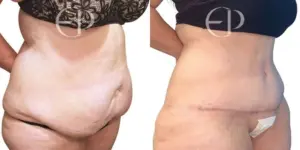
Discover more amazing tummy tuck results here
Aftercare: what you should do, what to expect
Proper aftercare is crucial to good recovery.
Pain management will be important in the first days and weeks. Expect medication initially, moving to less reliance on analgesics after about one week.
Movement is encouraged carefully: gentle walking early after abdominoplasty surgery helps reduce the risk of blood clots, a potential complication, by improving circulation. Early movement is important to lower the risk of blood clots forming in the legs or elsewhere. However, heavy lifting and strenuous physical activity must be avoided until the tissues have healed sufficiently (often six to twelve months or more).
Listening to your body, avoiding over-exertion, and attending all follow up appointments matter. Elena schedules follow ups at 1, 4, and 12 weeks, as well as at one year.
Scar care over time is important. Scars will fade over the course of months; by the end of one year they are often much less visible. The technique used and biological healing response influence scar visibility. Sun protection, keeping the scar clean and dry, and following surgeon’s advice will help.
Answering common tummy tuck recovery questions
How long will it take to stop needing medications after a tummy tuck?
Usually in about one week most of the pain medication or other postoperative medication can be stopped.
When can I stand straight and do everyday tasks after a tummy tuck?
Patients can expect to stand more upright in about two to four weeks. Everyday tasks increase gradually. Heavy lifting and strenuous tasks should still be avoided until muscles and tissues have recovered.
When can I drive after a tummy tuck?
Driving is typically possible after about four to six weeks depending on comfort, reaction ability, and ensuring movements do not stress the surgery site. Patients should only resume driving when they can safely check their blind spot and perform an emergency stop without discomfort. Opening and closing the car door can strain the healing area and should be avoided until cleared by the surgeon.
When will exercise be okay after a tummy tuck?
Light, low impact exercise can often begin around weeks eight to twelve. Strenuous exercise should be avoided until the surgeon confirms it is safe. More vigorous physical activity requires more healing time and should be approved by surgeon.
How long should I take off work after a tummy tuck?
Elena recommends four to six weeks off work generally, depending on the job’s physical demands. Sedentary jobs may allow earlier return; more physical labour must wait longer.
When are results final?
While improvements are seen earlier, full healing and final appearance is often reached around six to twelve months after surgery. Scars mature and contour settles during that time.
Risks, realistic expectations, and permanence of results
Elena makes clear that tummy tuck is not a substitute for weight loss. If you are in process of losing weight it is best to finish that first. Having a high BMI increases complication risk and may reduce satisfaction.
It is important to choose a board-certified plastic surgeon for your tummy tuck and related surgeries to ensure safety and optimal results. Tummy tuck is a form of plastic surgery and is often performed alongside other surgeries, such as breast augmentation or body lift, for comprehensive body contouring.
Results are long lasting provided you maintain stable weight. The removed skin and fat do not return unless there is significant weight gain. The fascia tightening is done with permanent sutures so that element of the repair is durable.
Scarring is inevitable but often well hidden and fades over time. Elena is honest about how visible scars might be depending on your body’s healing response and the technique used. Realistic expectations about healing timeline are essential.
About Elena Prousskaia
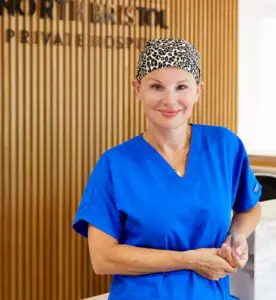
Elena Prousskaia is one of the UK’s leading plastic and cosmetic surgeons and one of very few females in the field. Her qualifications are extensive. She completed eight years of training in plastic and reconstructive surgery and then a three-year fellowship at hospitals including Guy’s and St Thomas’s in London. She also had further fellowships abroad, for example in Tokyo where she could see international advances. She is Board Certified, is on specialist registers, and holds memberships in respected professional bodies including the European Board of Plastic Surgeons.
Beyond technical skill Elena’s ethos is to put patients at ease, to listen carefully, and to have thorough, honest consultations. She believes empathy is central. Her manner, the time she takes with patients, and her communication before, during, and after surgery are key to achieving satisfactory outcomes.
Her reviews confirm this approach. Patient testimonials are overwhelmingly positive. On independent review sites such as IWantGreatCare her reviews are nearly all five stars. On Google reviews for tummy tucks in Bristol, patients repeatedly note not just good surgical results but good care, kindness, and feeling heard.
Why choose a private hospital like North Bristol Private Hospital?

There are several advantages of having tummy tuck surgery in a private hospital setting such as the North Bristol Private Hospital. Private hospitals tend to provide more private rooms, more personalised staff attention, and more flexibility in scheduling.
Second, the standards in a private hospital are usually very high in terms of sanitation, post‐operative monitoring, nursing care, and equipment. That matters especially in the first 24-48 hours after surgery when complications need fast detection and intervention.
Third, recovery is better supported with good facilities and staff to manage pain relief, drains, mobility support, wound care, dietary advice, and follow-up appointments. Access to a recliner chair can help patients rest comfortably and promote healing after surgery by reducing strain on the stitches, especially during the initial recovery period. Having a professional, experienced team available around the clock in a private hospital can improve safety and speed of recovery.
Also choosing a private hospital means that the costs are transparent and inclusive: Elena’s fees include hospital, surgeon, anaesthetic, and all post-operative visits.
To learn more, read our full blog here
Is tummy tuck recovery worth it, and why choose Elena?
Tummy tuck recovery is a journey that typically takes several months to a year. It begins with immediate postoperative care in hospital, progresses through gradual resumption of movement and normal activities, and culminates in the final healing of scars and tissues. During that time following instructions, avoiding risk factors (smoking, unstable weight, premature strenuous activity) and choosing a surgeon with experience and empathy are essential.
Choosing Elena Prousskaia means choosing a surgeon with top credentials, international training, respected qualifications, and a reputation for excellent clinical outcomes delivered in a caring environment. Factors such as her doing the consults with honesty, ensuring you are informed, and not rushing are very important for recovery.
Using a private hospital such as North Bristol Private Hospital or Spire Private Hospital in Bristol enhances safety, comfort, and attention to detail in both surgery and recovery. The inclusion of hospital, anaesthetic, surgeon, and post-operative follow-ups in cost simplifies the process for patients. The high standard of nursing, facilities, wound care, pain control and follow-ups helps the recovery go more smoothly and reduces risk of complications.
If you are considering tummy tuck surgery, understanding the full recovery timeline and selecting a surgeon and hospital who prioritise your safety, wellbeing and results such as Elena and North Bristol Private Hospital can make the difference between merely acceptable results and excellent, life-changing outcomes.
Share this article
Back to Advice Centre

